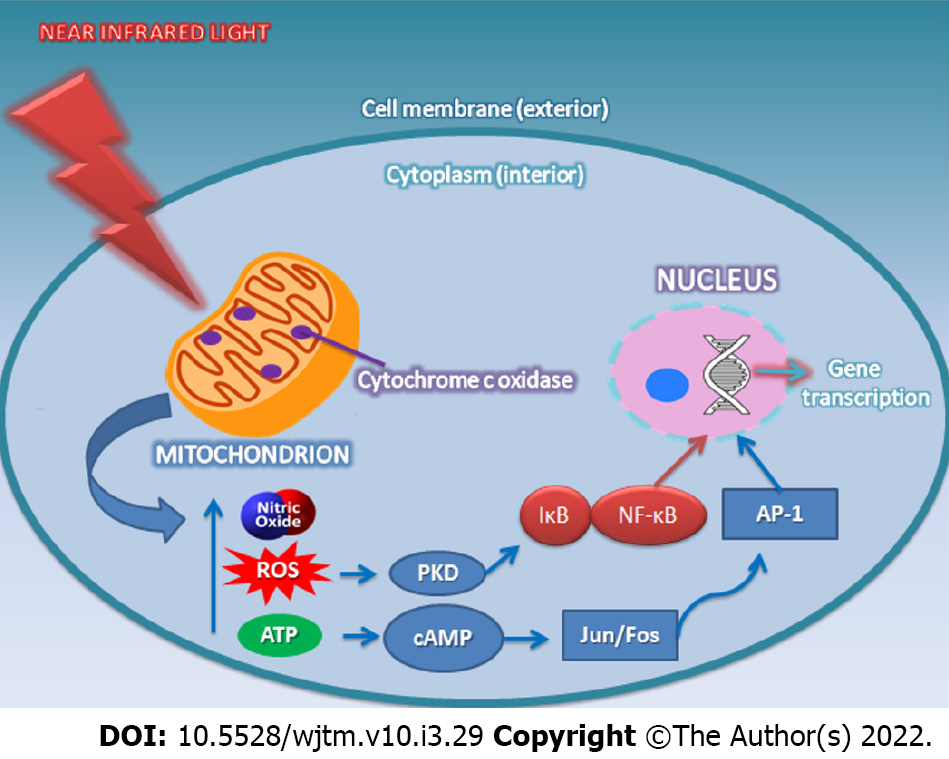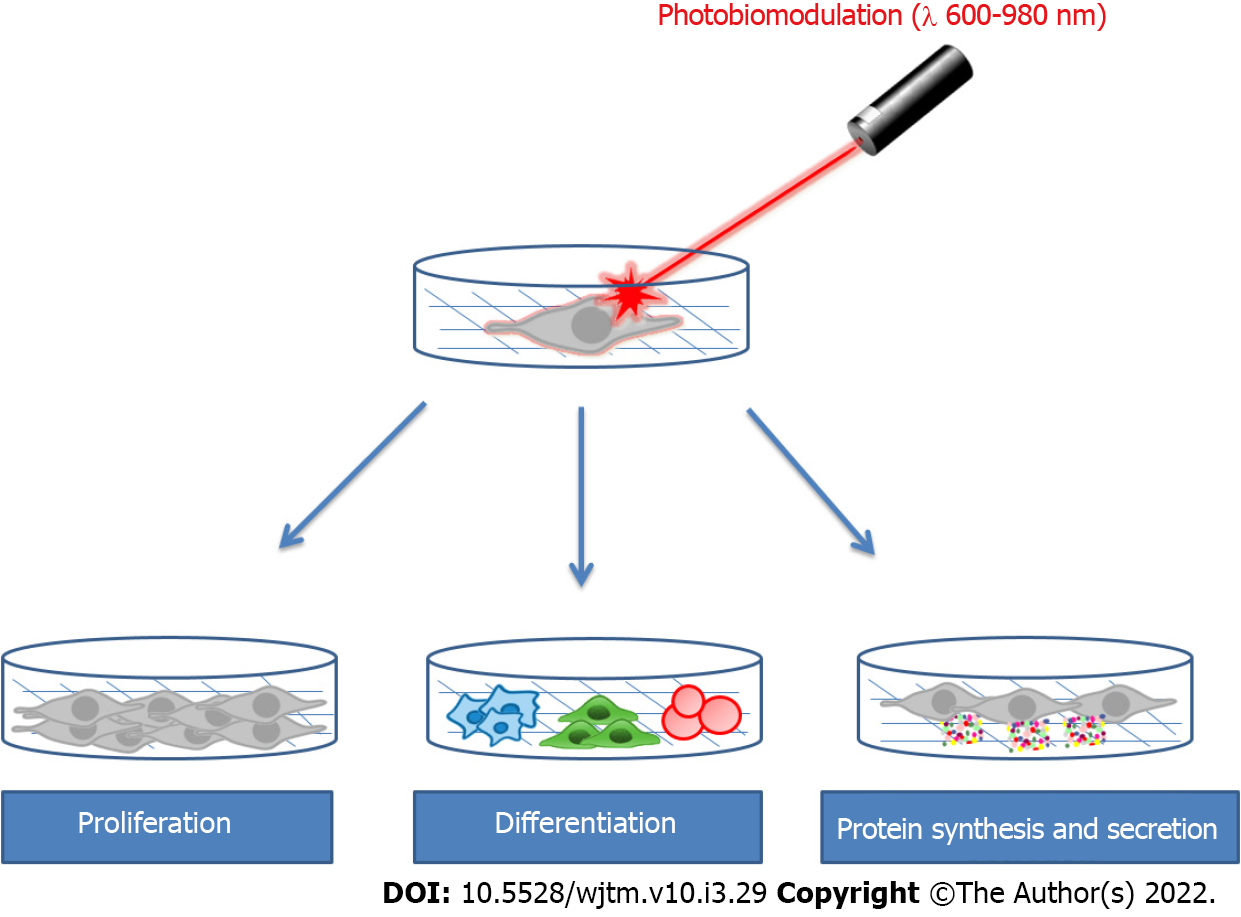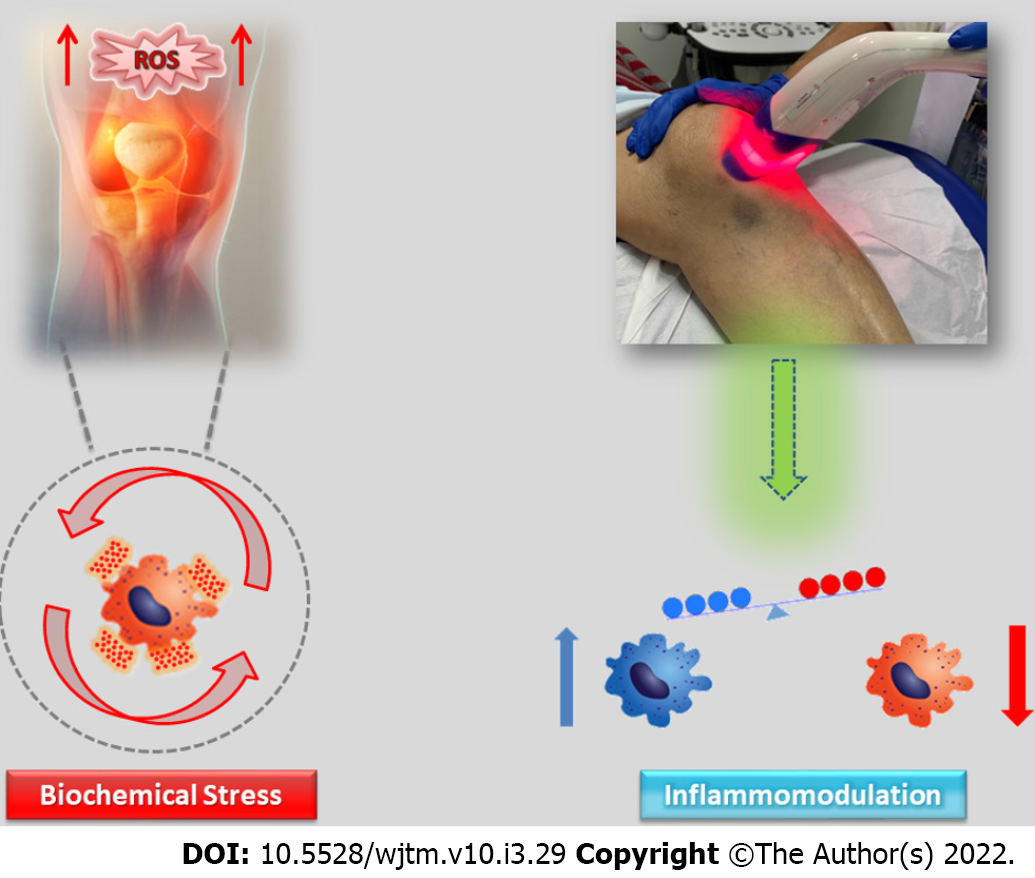Copyright
©The Author(s) 2022.
World J Transl Med. Aug 26, 2022; 10(3): 29-42
Published online Aug 26, 2022. doi: 10.5528/wjtm.v10.i3.29
Published online Aug 26, 2022. doi: 10.5528/wjtm.v10.i3.29
Figure 1 Photobiomodulation at near infrared light stimulates a subset of biochemical reactions in the mitochondrion in order to trigger transcription of genes associated with positive biological effects.
ROS: Reactive Oxygen Species; ATP: Adenosine Triphosphate; PKD: Protein Kinase D; cAMP: Cyclic Adenosine Monophosphate; IkB: IkappaB kinase; NF-kB: Nuclear factor kappa-light-chain-enhancer of activated B cells; Jun/Fos: Proto-oncogenes; AP-1: Activator protein 1.
Figure 2 In vitro application of wavelengths between 600 – 980 nm stimulates differentiation, proliferation and the secretion of specific cytokines and growth factors for further modulatory roles.
Figure 3
Photobiomodulation at a wavelength of 940 nm blocks the transmission of pain through sensory neuron fibers, thus promoting analgesic effects.
Figure 4
The application of photobiomodulation between 600 – 980 nm can attenuate inflammation by decreasing the production of pro-inflammatory agents and regulating the activation of immune cells.
- Citation: Giolo FP, Santos GS, Pacheco VF, Huber SC, Malange KF, Rodrigues BL, Bassora F, Mosaner T, Azzini G, Ribeiro LL, Parada CA, Lana JFSD. Photobiomodulation therapy for osteoarthritis: Mechanisms of action. World J Transl Med 2022; 10(3): 29-42
- URL: https://www.wjgnet.com/2220-6132/full/v10/i3/29.htm
- DOI: https://dx.doi.org/10.5528/wjtm.v10.i3.29












